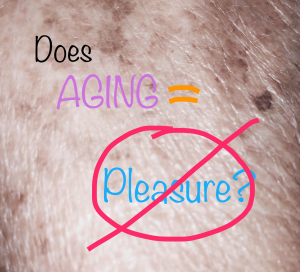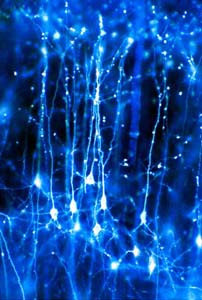
Last week I wrote about sprinkler heads.
Why would anyone stop to read about sprinkler heads?
Because it’s really about pleasure, and adapting to changes that block pleasure.
Maybe for you, it’s the sound of rain on the roof. Or perhaps you’re drawn to the beach, where the rhythmic splash of the surf and the caress of warm breezes relaxes your soul. Some prefer the mountains, with the scent of pine, and expansive views. Still others are drawn to the city, where light and movement dance all night. Wherever you’ve found yourself prone to relax, forget your stressors and relish the moment, that’s the spot.
That’s the spot I’m writing about.
I’m writing about our brains associating sensations (like the sound of the sprinklers) with pleasure. But then something happens to that spot:
- The sprinkler heads need replacing, and the new ones make a different sound
- Construction of a ten-story condominium interrupts your favorite spot at the beach
- A stuffy nose blocks you from the aroma of pine trees on your mountain hike
- The building across the street hangs a huge neon sign that blocks your view of the city
And the pleasure is gone.
That’s what I’m writing about!
We all relate to pleasure. We want pleasure. We need pleasure. Without pleasure, life is drudgery.
So how do we find pleasure once it’s gone?
(That’s why you’re reading an article that started out being about sprinklers!)
This five-part series can get you back to pleasure.
Today, I’m going to share with you a little more in depth about an obstacle I’m facing that is more challenging than changing sprinkler heads. It’s an obstacle that has been steadily crimping my pleasure for several years now, and one that I think many of you can relate to:

Aging. Dang it! I was going to knock around the tennis ball with my husband well into my 70’s. I was going to be that 80-year old still running the 5-K. I was going to dance in sexy high-heels well into my 90’s. I was going to lift bags of potting soil and bend over to tend the garden perhaps to 100.
Something ordinary and un-interesting blocked those pleasures well before their time: aging. In this aging body, they’ve labeled it many things: fibromyalgia (which I called the boogie monster in this article), arthritis, bone spurs, bulging discs and even a non-bony union of the subtalar joint. (Geez!) Whatever they’ve called it, it’s been one thing after another, and it’s left me with a choice between:
getting to do the active things I love or
 feeling good enough to function in daily responsibilities.
feeling good enough to function in daily responsibilities.
I fought it for a while. When my right shoulder hurt all the time, I taught my left arm to swing the racket. Then my left shoulder hurt. With both shoulders, a hip, low back and ankle hurting, I finally left the tennis court.

- Credit senorgifcom
Eventually, even less strenuous activities like ballroom dance, yoga, biking, walking and gardening produced more pain than pleasure.
For many people, this is “just part of aging.” They don’t talk much about it. They just don’t do as much as they used to do.
But hold on. . . Does aging have to mean life without pleasure? Is aging a slow process of peeling back the layers of pleasure until, at last, we’re ready to say goodbye to this cruel world?
I stepped back to think on this. Does aging have to equal lack of pleasure?

(Selah)
If pleasure is associated with sensations and neural connections are involved, and I’ve associated being an active elder with pleasure, can my brain connections be changed?
What is it about my hope of being an active older person that gives me pleasure?
Is the pleasure response from activities like running, playing tennis, dancing, yoga, biking, walking and gardening only from their associated sensations? Is it just from the proprioceptive feedback from pounding of my feet on the pavement? Is it just from the cardiovascular exchanges and the toxic release of sweat rolling down my face as I dart side to side across the clay to reach the yellow ball? Is it just from the visual and vestibular feedback of seeing the same houses as I bike around our neighborhood day after day? Is it just from the tactile and olfactory signals from the gentle breeze on an evening walk, or the texture of the soil between my gloved hands as I plant a new flower in the yard? Certainly those sensory-neuronal connections release chemicals that produce pleasure, but is that the only thing about it that brings pleasure?
Could that pleasure response also come from something I perceived or believed about those activities?
When I think about the pleasure response that comes from the idea of being an accomplished, active senior, it isn’t really so much about the sound, or the scent, or the tactile input, though they each have their value.
What is it, then?
A new question arises in my mind. Could the idea of being active well into my senior years produce a feeling of pride of achievement? Do I find pleasure in being better-than-average? In beating the odds?
Hmmm.
I have to admit I’ve enjoyed that feeling since childhood. As the fourth of six children, affirmation and attention didn’t come easy for me. As a young child, I found affirmation and attention from being the smart one, the honor roll student, the best and the fastest. I could recite the alphabet before my school-aged brother when I was two years old. I could out-spell all of my older siblings by the time I was eight. I did algebra from my brother’s 9th grade textbook when I was ten, and, by the time I was thirteen, I could cook, clean and budget better than my mother (Sorry, mom). No one would call me lazy! I got positive attention from dancing, from taking care of myself, from being up and ready on time. In short, from outshining my sibs.
Hmmmm. Maybe I’ve held an erroneous belief all these years, and didn’t ever notice it.
(Note: Erroneous because pleasure never should have been from feeling better-than-average in the first place, but that is another story!)
My experience with aging is just one example of how loss of pleasure can be related not only to a change in physical ability and sensations, but also to underlying perceptions or beliefs.
Maybe you’ve had to stop and examine yourself, too. Maybe a challenge you faced persisted to the point that you had to look deeper into yourself to question why you struggled to adapt to your loss. Maybe you didn’t even realize you held erroneous perceptions or beliefs, until you had to stop and examine the matter.
Yet, here we are: a change in sensation, a change in some bodily function, a change in something beyond our control, a change that keeps us from achieving that which we believed would make us feel good– and pleasure eludes us.
What can be done? If aging—and its associated decrease in strenuous activities and impressive performance—continues this way (as it likely will), then where can pleasure be found? And what about you? Whatever it is that you’ve been believing but isn’t working out for your pleasure, can it be changed?
How can we get our brains to release that much-needed pleasure response again? Can changing our underlying beliefs help us find pleasure again?
That’s where we’ll pick up next.
(Click here for part 3 in this 5-part series Elusive Pleasures)
In the meantime, I hope you’ll join this conversation by commenting below (in orange, where its says “Leave a comment.” What changes in sensations, or functions, or other losses seem to rob you of the pleasure response in your brain? What underlying perceptions or beliefs have you identified when you more closely examine your childhood associations?
-Joan
“You will show me the path of life; in Your presence is fullness of joy, at Your right hand there are pleasures forevermore.” Psalm 16:11, AMPC
Share this from joantwarren.com:
















